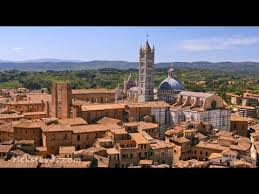That move deftly got me out of challenge posed here in an affectionate way. But only for a moment. One month later I dropped in to a noon Mass at the CIC and Fr. Arne, in the homily, remarked that “the one thread that connected these two readings today is c-c-c-c courage.” That was the hook that finally worked. We had lunch, we mapped out a series of five or six sessions of instruction, for the decision was finally made. And just yesterday (as I write this), on April 24, I came into the Church in Fr. Arne’s chapel, with Michael Novak as my sponsor.
To my astonishment, friends were willing to fly in from Boston and Cleveland and places even more exotic for this occasion. The chapel was filled with dear friends, and it was deeply moving to see them coming up to take communion. Fr. Arne’s service was elegant and lovely, his homily deeply thoughtful. And sure enough, he managed to weave in a note about “c-c-c-c courage.” But even Fr. Arne professed to be moved by the friends gathered there. To me they had come to represent the “body of the Church”: every one of them marked a moment, or even a chapter in the story, for they each revealed to me, in their own character, what it meant to lead a Catholic life. Each in his own way, taught me something of the teachings of this Church, and each showed me the welcoming face of the Church.
It began with Dan Robinson, when we were on the faculty together at Amherst. I was beginning to think in a probing way about the issue of abortion, and Dan showed me that the Church’s position really depended on a combination of empirical evidence (embryology), woven with moral reasoning. It was natural law reasoning. As Aquinas said, the divine law we know through revelation, but the natural law we know through that reason that was natural for human beings. The Church’s moral position here did not depend on faith or belief. One didn’t have to be Catholic to understand it. And that was precisely the teaching of the Church.
As I began to write myself on abortion and marriage and the issues of the day, I was filling out a natural law perspective, and drawing to myself a constituency certain that I was a Catholic writer. Joe Reilly, in Boston, was the first one to tell me years ago that I was becoming a notable “apologist” for Catholic teaching. Dan Robinson would say, “Yes, but your problem is that you’re pre-Vatican II.” As a Jewish Catholic, I was too severe a Catholic.
One friend, who converted at Oxford, told me that the resonating line for him came from our friend Dermot Quinn. Dermot said that you can believe everything the Church tells you and not be a good Catholic. The question is, “Do you believe in the Church as a truth-telling institution?” And I thought: I do, I really do. When the Church stands contra mundum¸ against the currents of relativism in the world, my inclination is to think that the Church has it right.
As Fr. Jim Burtchaell used to say, the Church draws on vast experience and lifts a mirror to put in one’s face: it shows you what you are going to look like if you proceed along this path. The Church has become the main enclave to preserve the sobriety of moral reasoning, natural law reasoning, when the currents of relativism have inundated and corroded the academy and other institutions.
I’ve come to this matter then through the Church. But the Church cannot be understood apart from the one who planted the Mustard Seed from which it grew and took its shape and character. Nor can it be detached from the Spirit that managed to preserve the discipline of its moral teachings even through times of trouble and disarray.
We had, clustered around us, the friends who had formed and nourished the journal First Things, and the band of brothers, led now by Robert Royal, who held together in bringing forth the The Catholic Thing. There is more to the story, of course, than I can relate in this space; it will have to come later. But to take a line from Richard Neuhaus, it may be a story about, “How I became the Catholic I was.”















